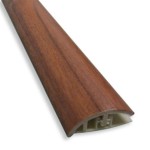Polyurethane is a great way to protect and seal hardwood floors, and it’s a relatively simple process that can be done by most DIYers. Polyurethane can help protect your hardwood from dirt, stains, and even water damage. In this article, we’ll go over the steps needed to properly polyurethane hardwood floors.
Preparing the Area
Before you start the polyurethane process, make sure the area is properly prepped. You’ll need to remove any existing furniture, rugs, or other items. Vacuum the area to remove any dirt or debris. Make sure the floor is dry and clean before you start.
Applying the Polyurethane
Once the area is prepared, it’s time to start applying the polyurethane. Start by pouring the polyurethane into a paint tray. Use a roller to spread the polyurethane onto the floor. Make sure to work in small sections, and use a brush to get into any hard-to-reach areas. Let the polyurethane dry for at least four hours before continuing.
Sanding the Floor
Once the polyurethane has dried, use a sanding block with 220-grit sandpaper to lightly sand the floor. Make sure to move the sanding block in the same direction as the grain of the wood. Vacuum up any dust and debris.
Applying the Second Coat
Once the floor has been sanded, it’s time to apply the second coat of polyurethane. Once again, use a roller to spread the polyurethane onto the floor. Let it dry for at least four hours.
Sanding the Floor Again
Repeat the sanding process from before, using the same 220-grit sandpaper. Vacuum up any dust and debris.
Applying the Final Coat
Once the floor has been sanded, it’s time to apply the final coat of polyurethane. Once again, use a roller to spread the polyurethane onto the floor. Let it dry for at least four hours.
Cleaning and Finishing
Once the final coat of polyurethane has dried, you can use a soft cloth to wipe away any dust or debris. Your hardwood floor is now properly sealed and protected. Enjoy your newly polyurethaned hardwood floors!

/GettyImages-183771871-dd1b7eb9d6d74b61a7c57dcb61e280fc.jpg)





/cdn.vox-cdn.com/uploads/chorus_image/image/65891819/00_refinishing_xl.0.jpg)





Related Posts








